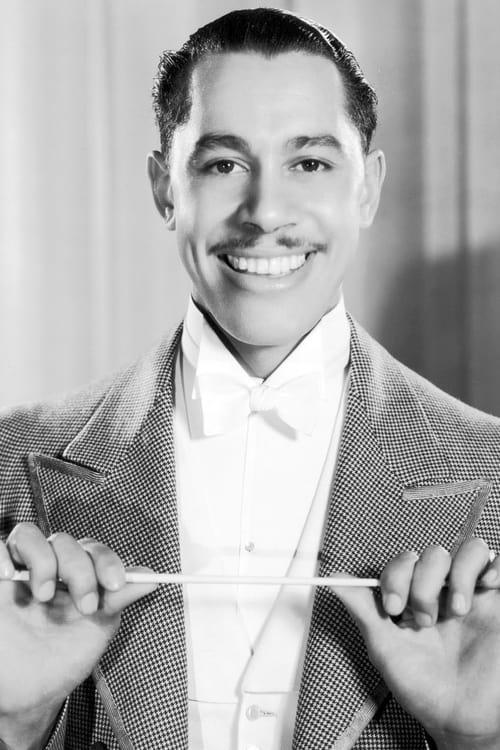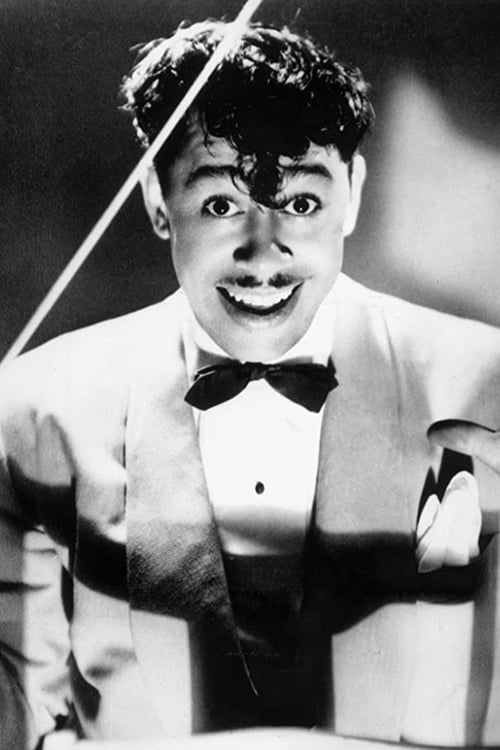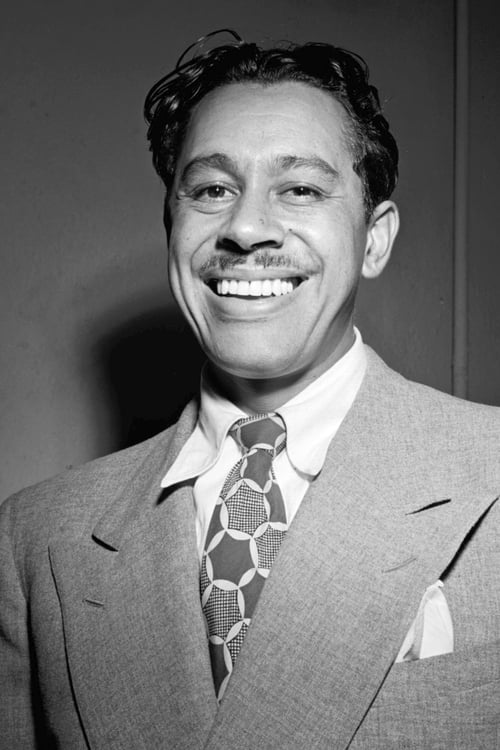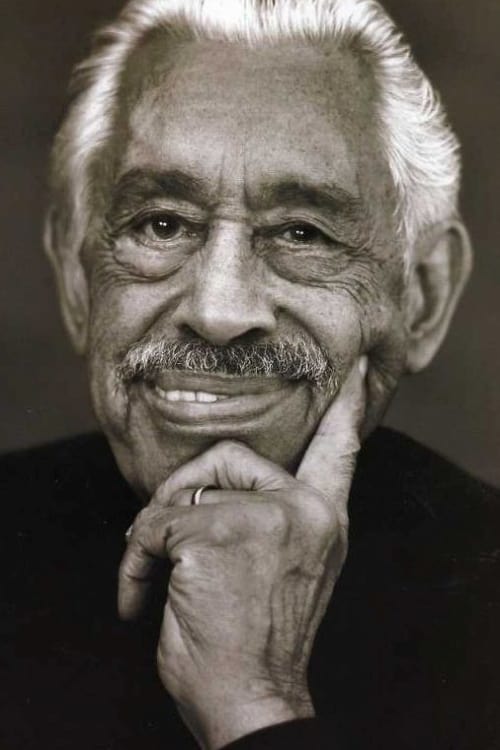Cab Calloway
출생 : 1907-12-25, Rochester, New York, USA
사망 : 1994-11-18
약력
Cabell "Cab" Calloway III (December 25, 1907 – November 18, 1994) was an American jazz singer and bandleader.
Calloway was a master of energetic scat singing and led one of the United States' most popular African American big bands from the start of the 1930s through the late 1940s. Calloway's band featured performers including trumpeters Dizzy Gillespie and Adolphus "Doc" Cheatham, saxophonists Ben Webster and Leon "Chu" Berry, New Orleans guitar ace Danny Barker, and bassist Milt Hinton. Calloway continued to perform until his death in 1994 at the age of 86.
Description above from the Wikipedia article Cab Calloway, licensed under CC-BY-SA, full list of contributors on Wikipedia.
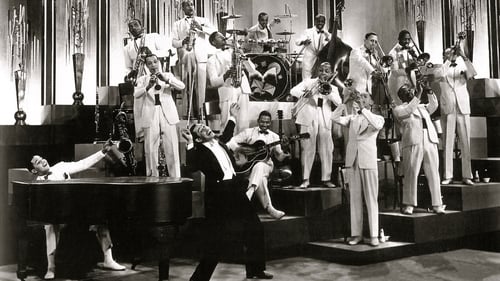
Himself
A singer, dancer, and bandleader, Cab led one of the most popular African American big bands during the jazz and swing eras of the 1930s-40s, with Harlem’s famous Cotton Club as his home stage. Best known for his “Hi de hi de hi de ho” refrain from signature song “Minnie the Moocher,” portrayal of Sportin’ Life in Porgy and Bess (1952), and role in The Blues Brothers (1980), Cab influenced countless performers, including Michael and Janet Jackson, and many of today’s hip-hop artists.

Self (archive footage)
Discover how television has reflected the African American experience in this retrospective of the medium's first half-century. Actors, writers and historians discuss the image of black America on television from Amos and Andy to the present day. The interviews accompany clips from groundbreaking shows and performances by entertainment pioneers that create a timeline of the portrayal of African Americans throughout TV history.
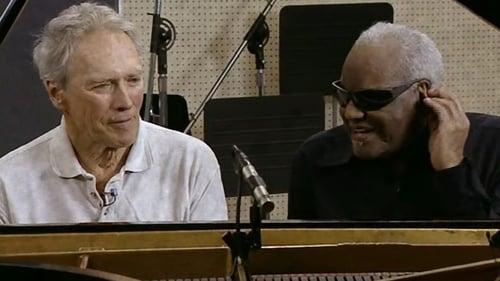
Self (archive footage)
Director — and piano player — Clint Eastwood explores his life-long passion for piano blues, using a treasure trove of rare historical footage in addition to interviews and performances by such living legends as Pinetop Perkins and Jay McShann, as well as Dave Brubeck and Marcia Ball.

Himself
The Stories Behind the Making of The Blues Brothers is an hour- long documentary featuring every participant from the film. Star and co-writer Dan Aykroyd explains how a joke that he and best friend John Belushi shared with friends evolved from a Saturday Night Live skit to a best-selling album and then to a film. Director John Landis covers the difficult production, from the outrageous stunts to Belushi's disappearances from the set.

Self (archive footage)
From the A&E "Biography" series, a review of the birth, development and cinematic history of Betty Boop, the flapper cartoon character who has been a popular icon since the 1930s.

Self
A celebrity benefit for The Actors' Fund of America, featuring music, songs, dance and comedy.

Self
This special is the second "Night of 100 Stars" to benefit The Actors Fund of America. Edited from a seven-hour live entertainment marathon that was taped February 17, 1985, at New York's Radio City Music Hall, this sequel to the 1982 "Night of 100 Stars" special features 288 celebrities.
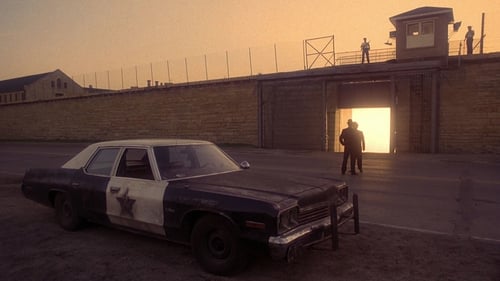
Curtis
시카고 부근의 한 천주교 고아원에서 자란 형제 제이크(Joliet Jake: 존 벨루시 분)와 엘우드(Elwood: 댄 애크로이드 분)는 검은 양복, 검은 모자, 검은 안경이 트레이드마크인 괴짜들이다. 본업은 리듬앤블루스 밴드 리더였던듯 한데, 오늘은 저간의 곡절로 옥살이를 한 형제 제이크가 모범수로 가석방되는 날이다. 경찰서 폐기처분장비 공매장에서 헐값에 산 중고 경찰차를 몰고 마중 나온 동생 엘우드는 출감한 제이크를 태우고 어렸을때 생활하던 고아원으로 간다. 5천달러의 세금을 며칠 안에 납부하지 않으면 고아원이 교육청에 팔리게 된다는 말을 원장 수녀로부터 들은 블루스 형제는 밴드를 다시 조직하여 큰 공연을 함으로서 5천달러를 마련하겠다는 계획을 세운다. 제이크가 감옥에 들어갈때 각자 살 길을 찾아나서서 지금은 나름대로 자리를 잡고 사는 옛 밴드 멤버들을 우역곡절 끝에 재규합하는데 성공한 블루스 형제는, 오라는 곳 없는 불청객으로 길을 가다 어느 컨트리 앤웨스턴 주점에 들어가 무조건 노래를 부른다. 주점 주인이 연주료 200달러를 주며 밴드가 마신 맥주값 300달러를 청구하자 돈이 없는 블루스 형제는 잽싸게 차에 올라 도주하여 극장 예약업자 모리(Maury Sline: 스티븐 로렌스 분)를 찾아간다. 모리의 약점을 이용하여 5천석 규모의 대극장 공연을 따낸 블루스 형제는 옛 고아원 교사 커티스(Curtis: 캡 콜로웨이 분)와 고아원 아이들의 도움을 받아 하루만에 대규모 선전을 성공리에 마친다. 극장에 구름같이 모여든 청중들은 블루스브라더스 밴드의 노래에 열광한다. 레코드사 사장이 취입 제안을 하면서 선약금 만달러를 내놓기까지 한다.

A film by Chris Robinson.

Self (archive footage)
Ossie Davis narrates a history of "race films," films made before 1950 which catered to a primarily black audience.
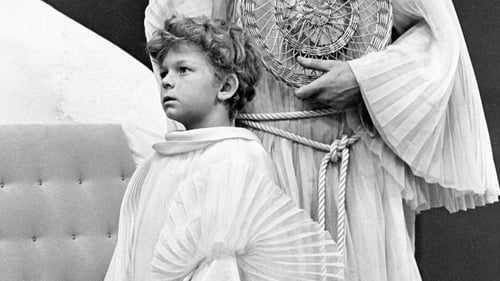
Gabriel
Adapted from the book by Charles Tazewell. Michael, a shepherd boy living in Biblical times, finds himself transported to Heaven on his eighth birthday. Michael doesn't fully understand where he is, or why he's there. A guardian angel named Patience is given the task of showing Michael the joys of Heaven and helping him find his place in the Hereafter.

Yeller
전문 도박사, 신시내티 키드(스티브 맥퀸 분)는 시시한 도박판에 염증을 느끼며 하루하루 무료한 생활을 하고 있다. 때마침 당대 최고의 도박사, 랜시 하워드(에드워드 G. 로빈슨 분)가 게임을 하기 위해 뉴올리언스에 오자 그에게 도전장을 내민다. 뉴올리언스 출신의 또 다른 전문 도박사, 슈터는 딜러를 자청하며 신시내티 키드와 랜시 하워드의 게임을 주선한다. 하지만 랜시 하워드의 오랜 숙적인 슬레이드의 계략에 휘말려 승부를 조작하기로 마음먹는다. 마침내 한 호텔방에서 도박판이 벌어지고 한창 게임을 하던 신시내티 키드는 슈터의 행동에서 뭔가 수상쩍음을 눈치 챈다. 그리고 그를 닦달해서 슬레이드가 부정한 방법으로 자신에게 유리한 게임이 되도록 만들고 있다는 사실을 알게 된다. 공정한 방법으로 당당하게 전설적인 도박사를 누르고 싶었던 신시내티 시티는 슬레이드의 제안을 뿌리치고 소신껏 행동한다. 몇 시간의 휴식 후 다시 게임이 시작되고 엄청난 판돈이 오간다. 최종 베팅의 순간... 두 도박 고수의 게임을 지켜보고 있던 사람들은 모두 신시내티가 이길 것이라고 예상한다. 하지만 사람들의 예상과는 달리 행운의 여신은 랜시 하워드의 손을 들어준다. 패배를 인정하고 허탈한 마음으로 호텔을 나온 신시내티 키드는 항상 자신을 따라다니며 동전 던지기를 조르는 구두닦이 소년을 만난다. 소년의 부탁대로 동전 던지기 게임을 하지만 스스로 최고의 도박사임을 자부하던 신시내티 키드는 이번에도 지고 만다.
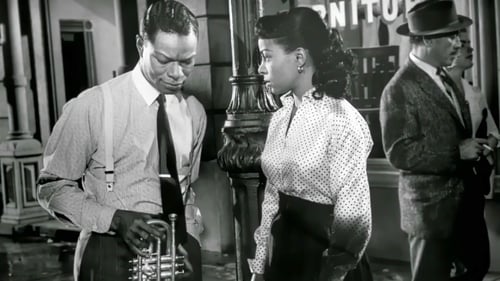
Blade
Will Handy grows up in Memphis with his preacher father and his Aunt Hagar. His father intends for him to use his musical gifts only in church, but he can't stay away from the music of the streets and workers. After he writes a theme song for a local politician, Gogo, a speakeasy singer, convinces Will to be her accompanist. Will is estranged from his father for many years while he writes and publishes many blues songs. At last the family is reunited when Gogo brings them to New York to see Will's music played by a symphony orchestra.

Self (archive footage)
A made-for-TV musical revue, compiled from soundies and film and TV performances by jazz greats from the 1930s to the 1950s.

Self
Rhythm and Blues Revue is a plotless variety show, one of several compiled for theatrical exhibition from the made-for-television short films produced by Snader and Studio Telescriptions, with newly-filmed host segments by Willie Bryant. Originally 86 minutes, the "short" version available on public domain collections and websites is missing a reel
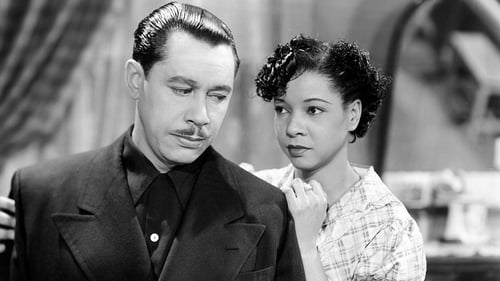
Himself
Cab Calloway plays himself in a plot about jealousy, night clubs, and gangsters. Ends with a series of musical numbers.

Himself
Cab Calloway sings "We the Cats Shall Hep Ya".

Cab Calloway sings "Foo a Little Bally-Hoo".

Cab Calloway & Dotty Saulter perform "I Was Here When You Left Me".

Cab Calloway performs "Blowtop Blues".

Cab Calloway and his Orchestra perform "Walking with My Honey".

Himself
Louis Jordan, with his band, sings and performs the title song, "Caldonia,", and "Honey Child," "Tillie" and 'Buzz Me", wowing the jitter-buggers, zoot suits and bobby-soxers of the mid-1940s, all built around a wisp of a plot dealing with the difficulties of production in Harlem.
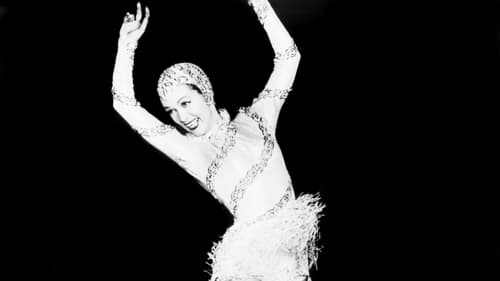
Cab Calloway
As dancer Ginny Walker performs on stage, a veiled woman in the audience stands up, accuses Ginny of stealing her husband and then fires a gun at her. After Ginny collapses and is taken to her dressing room, the woman, Julia Westcolt, a friend of Ginny's, dashes backstage, discards her veil, and then congratulates her friend on their successful publicity stunt. When Ginny's press agents, Gus Crane and his son Junior, visit their client backstage, she brags about her feat and chides them for not being more creative in promoting her. Horrified at Ginny's brashness, Junior, a conservative Harvard graduate, chastises her and leaves the room.
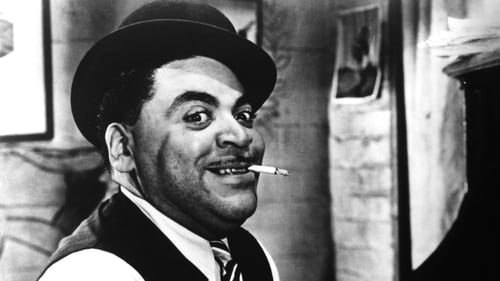
Cab Calloway
Dancing great Bill Williamson sees his face on the cover of Theatre World magazine and reminisces: Just back from World War I, he meets lovely singer Selina Rogers at a soldiers' ball and promises to come back to her when he "gets to be somebody." Years go by, and Bill and Selina's rising careers intersect only briefly, since Selina is unwilling to settle down. Will she ever change her mind? Concludes with a big all-star show hosted by Cab Calloway.

Cab Calloway and The Cabaliers are singing about how The Big Bad Wolf only talks about his Disney money, Felix the Cat is fat and rich, and Mickey the Mouse is riding in his motor car, while the skunk moans about how "nobody loves me" on account of him just being a "dirty old skunk".

Himself / Vocals
Cab Calloway performing his famous hit "Minnie the Moocher".

Cab Calloway and his Cabaliers sing "Blues in the Night".
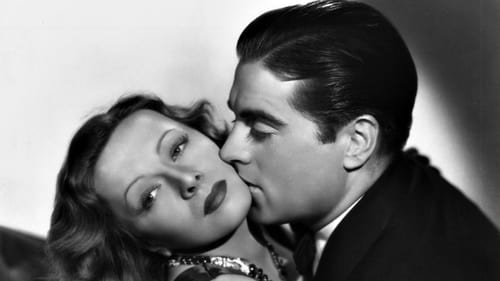
Cab Calloway Orchestra
In this musical comedy, a crooked record producer uses his mob connections to force performers to do their stuff. The trouble really begins when the gangster's strong-arm tactics nearly cause a singer to lose his fiancée. A wide variety of entertainers appear including cowboy crooner Gene Autry, baseball hero Joe DiMaggio, and big band stars Cab Calloway, Ted Lewis, and the Kay Thompson Singers. Songs include "Mamma I Wanna Make Rhythm," "Manhattan Merry-Go-Round," "Heaven?," "I Owe You," and "It's Round-up Time in Reno."

Young Cab Calloway's mother is concerned, because Cab spends his days listening to the radio, pretending to lead a miniature orchestra. A deacon passing by the apartment hears him singing and advises him go to his wife's gypsy tea room. As she reads the tea leaves, she sees situations which lead to Cab and his orchestra performing musical numbers.
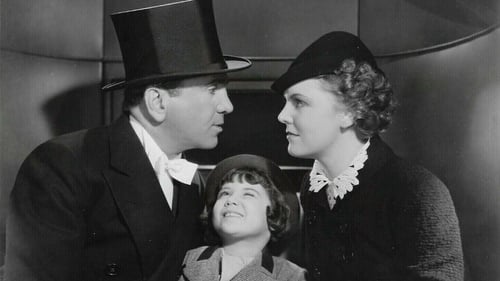
Cab Calloway
Neurotic Broadway star Al Jackson faces professional ruin when he loses his voice. While recuperating in the country, he falls in love with farm girl Ruth Haines, the pretty aunt of precocious little Sybil Haines.

Cab Calloway performs at the Cotton Club before he takes his friends down to Harlem for a jitterbug party.

Cab Calloway
This jazz musical short has a comedy plot about marital infidelity.

Old Man / Reporter
A reporter interviews Max Fleischer about his creation, and Betty illustrates with excerpts from three prior cartoons.

This riveting collection of jazz singer and bandleader Cab Calloway's most electrifying performances brings to life a bygone era of swinging jazz and heart-stopping musical numbers. One of the great jazz artists of his time, Calloway was closely associated with the musical movement of 1930s and 40s Harlem, and was a regular performer at the famed Cotton Club.
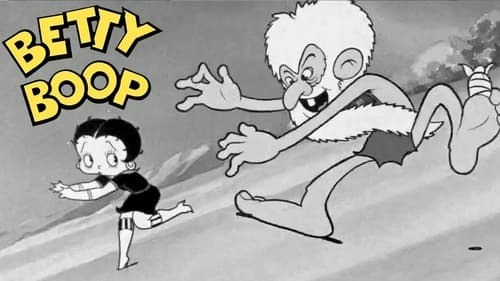
Himself & Old Man
Betty Boop goes to see the fearsome Old Man of the Mountain for herself; he sings the title song and a duet with Betty.
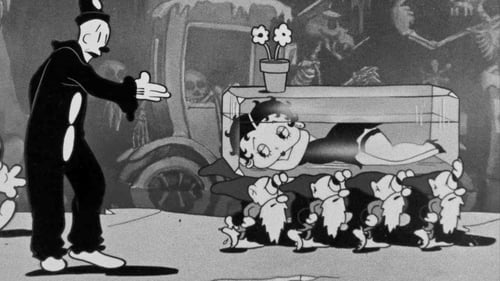
Koko the Clown (voice)
Trouble starts when the queen's magic mirror says Betty Boop is fairest.
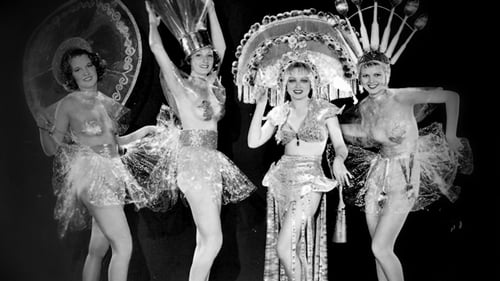
Cab Calloway
Foreign investors converge on a luxury hotel in China to bid on a new kind of radioscope. But, this is a hotel where Burns and Allen are the in-house medical staff, a measles risk sends the whole building into quarantine, and a madcap millionaire crashes dinner in his autogyro. Hotel and radioscope become a stage for an all-star cast of comedians and musicians, from vaudeville to the new generation.
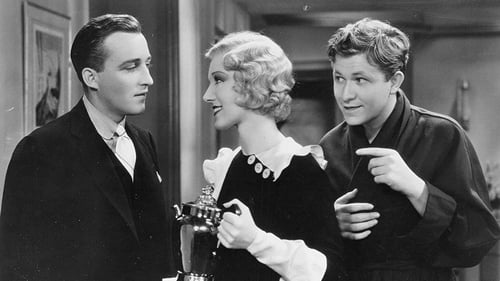
Cab Calloway
The top brass at a radio station believe their popular new star singer is paying more attention to his love life than to his career.

Self - Bandleader
Betty Boop and Bimbo run away from home, but that night they are scared by a chorus of ghosts singing the title song.
